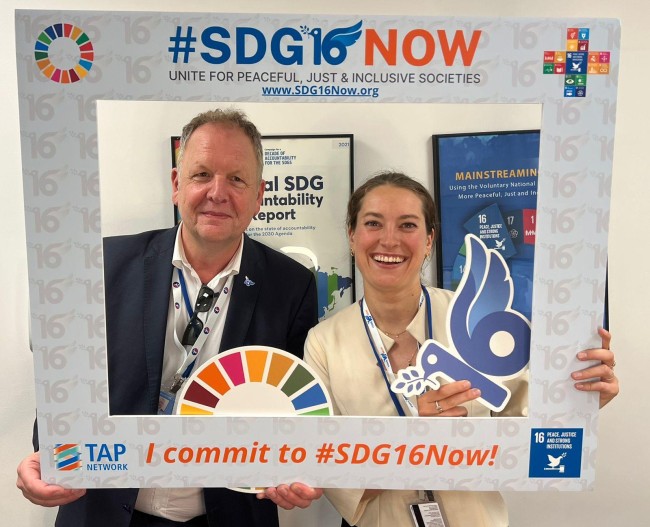
HLPF 2024: Reinforcing the SDGs for the 2030 Agenda Target
Earlier this month of July, the High-level Political Forum (HLPF) 2024 concluded with nations reiterating the need for renewed impetus and accelerated action to achieve the Sustainable Development Goals (SDGs) by the 2030 deadline. Highlighting the need for innovative solutions to eradicate poverty, climate action, the de-escalation of violence and the importance of multi-stakeholder partnerships to achieve the SDGs. In this article we look back on our participation and share a few observations.
But first, what is HLPF? The High-Level Political Forum on Sustainable Development (HLPF) is the central global platform for follow-up and review of the 2030 Agenda for Sustainable Development and the Sustainable Development Goals (SDGs). The HLPF is intended to serve as a platform for countries to present their Voluntary National Reviews (VNRs), for sharing progress, potential challenges, and best practices for achieving the SDGs. The theme of this year’s HLPF is "Reinforcing the 2030 Agenda and eradicating poverty in times of multiple crises: the effective delivery of sustainable, resilient and innovative solutions”.
As SDG16 is central to the work of CSPPS, this year’s thematic review was particularly timely and important to promote the goals and targets of SDG16 on peace, justice and inclusion. Throughout the first week at HLPF, the Secretariat attended various side events and official events hosted by partners and colleagues from the SDG16 community and beyond. We heard from member state representatives, UN agencies and civil society about their efforts in advancing the targets of SDG16 and the overall goals of the 2030 Agenda in their respective countries and at the international level at large.
A few key takeaways we take with us further from HLPF 2024:
- Official events give a good structure to discuss the status of the Sustainable Development Goals but offer limited off-script and in-depth discussions from member states and civil society. Side events hosted in the margins of the HLPF provide more of these open spaces and must be increasingly highlighted. The sessions organised by civil society were often more substantial and impactful.
- Meaningful civil society participation at all levels is crucial for realising the SDGs. However, even within UN- platforms like the HLPF, there remains no official way of integrating civil society voices into the VNR processes. The inclusion of various stakeholders at the United Nations in such international events persists to be challenged. Various colleagues highlighted the challenges in securing timely registration and visas for representatives from the Global South. This was particularly the case for local and national civil society. This highlights the challenges in creating and enabling inclusive spaces for all, even at the UN-level. If we are to achieve our common goals of inclusion and equality worldwide, it must be reflected from the institution driving the global agenda.
- Storytelling was a persistent theme and request. Whether this was from civil society or from member state representatives, or again international institutions, the need for advancing the voice of those making a difference as practitioners and of those furthest behind, must persist to influence policy makers and governments. Whilst there is a wide range of data on SDG16 and the other goals of the 2030 Agenda, continued efforts must be put in highlighting key successful stories of action and progress at the national and local levels.
- The Voluntary National Review (VNR) remains a key moment to influence the efforts of governments in promoting their commitments to the 2030 Agenda through a multi-stakeholder approach. It is key to embark on this through a whole-of-government and whole-of-society approach, however the inclusion of civil society in this process remains challenging. Successful examples of countries, such as Mexico or Austria in integrating the participation of civil society in the official VNR process this year, reflected a strong collaboration between the governments and civil society, but also in-between civil society at the national level. It is important to note that the process in the lead-up to and after a VNR is completed is as important as the outcome itself. The VNR should feed into a development planning process to correct the course where needed. It is great to see some good examples of direct involvement of civil society in countries reporting for a multiple time, in which a participatory process and direct engagement has matured between the stakeholders into a collaborative effort in collecting data to strengthen a next report.
It is not too late to make sustainable development a reality, but that means that Member states need to move beyond rhetoric and good intentions and boldly embrace and implement concrete and genuine commitments. Over halfway to 2030, it is time for renewed dedication and decisive action and to accelerate the implementation of the 2030 Agenda and foster trust among individuals, governments, and the multilateral system.


